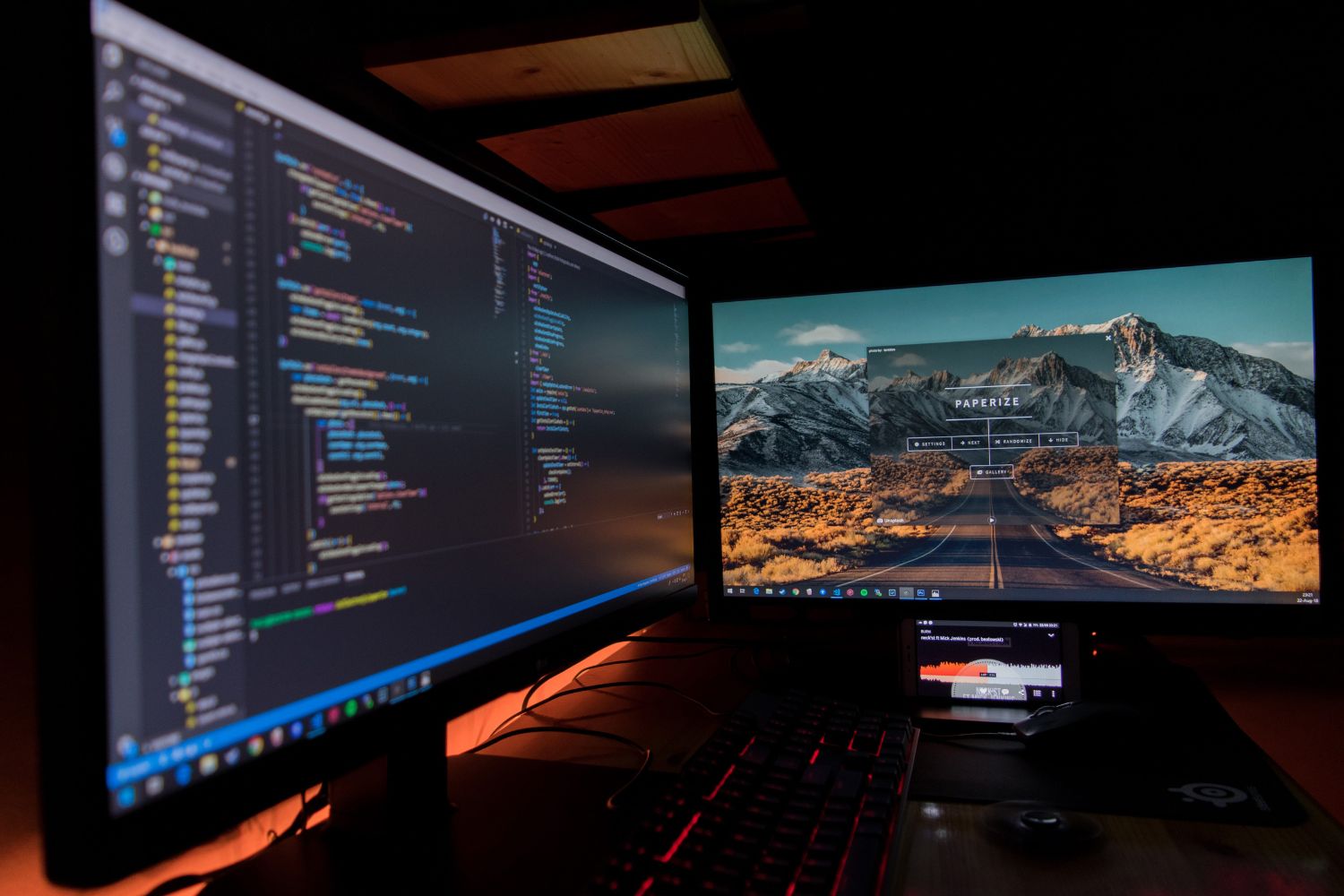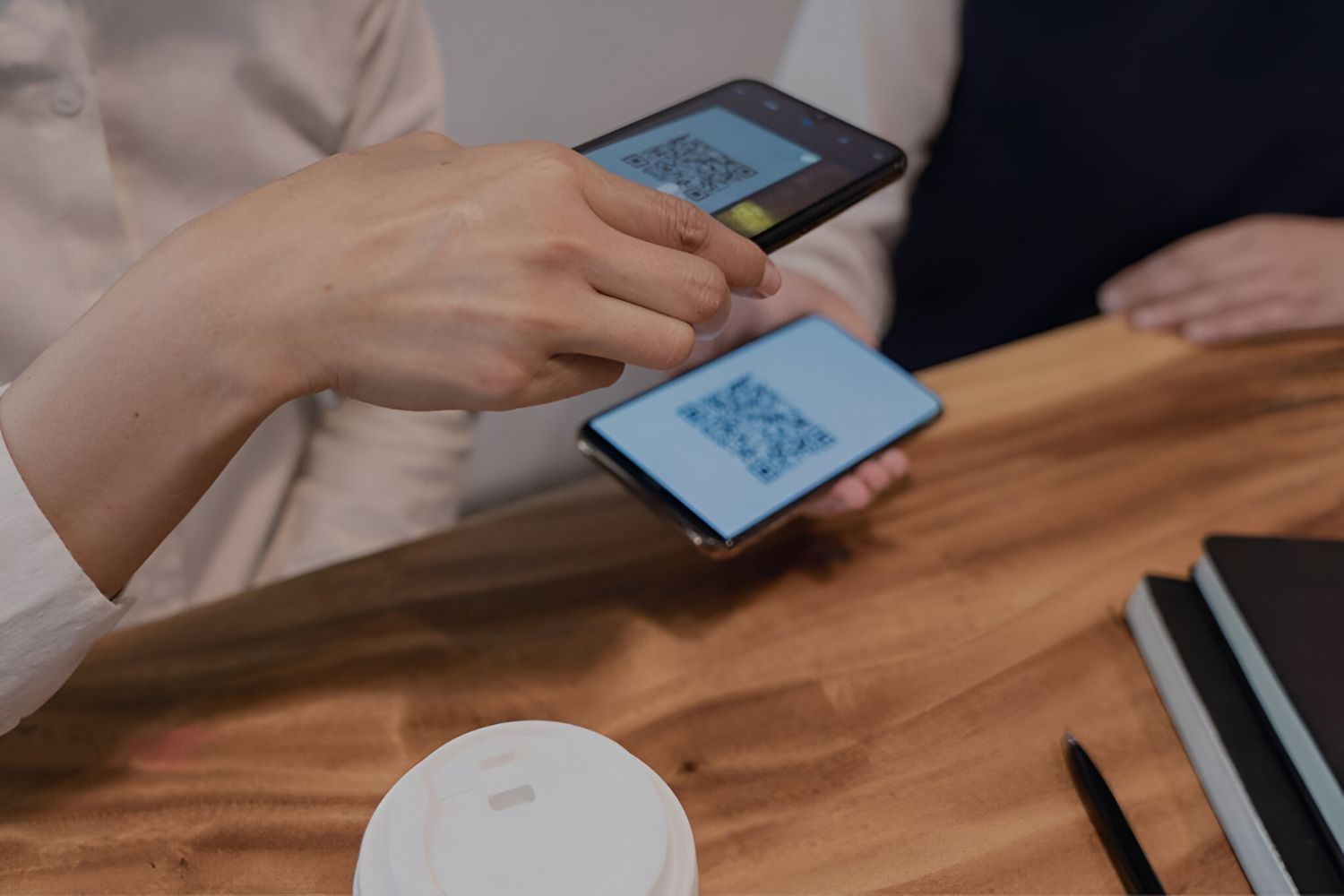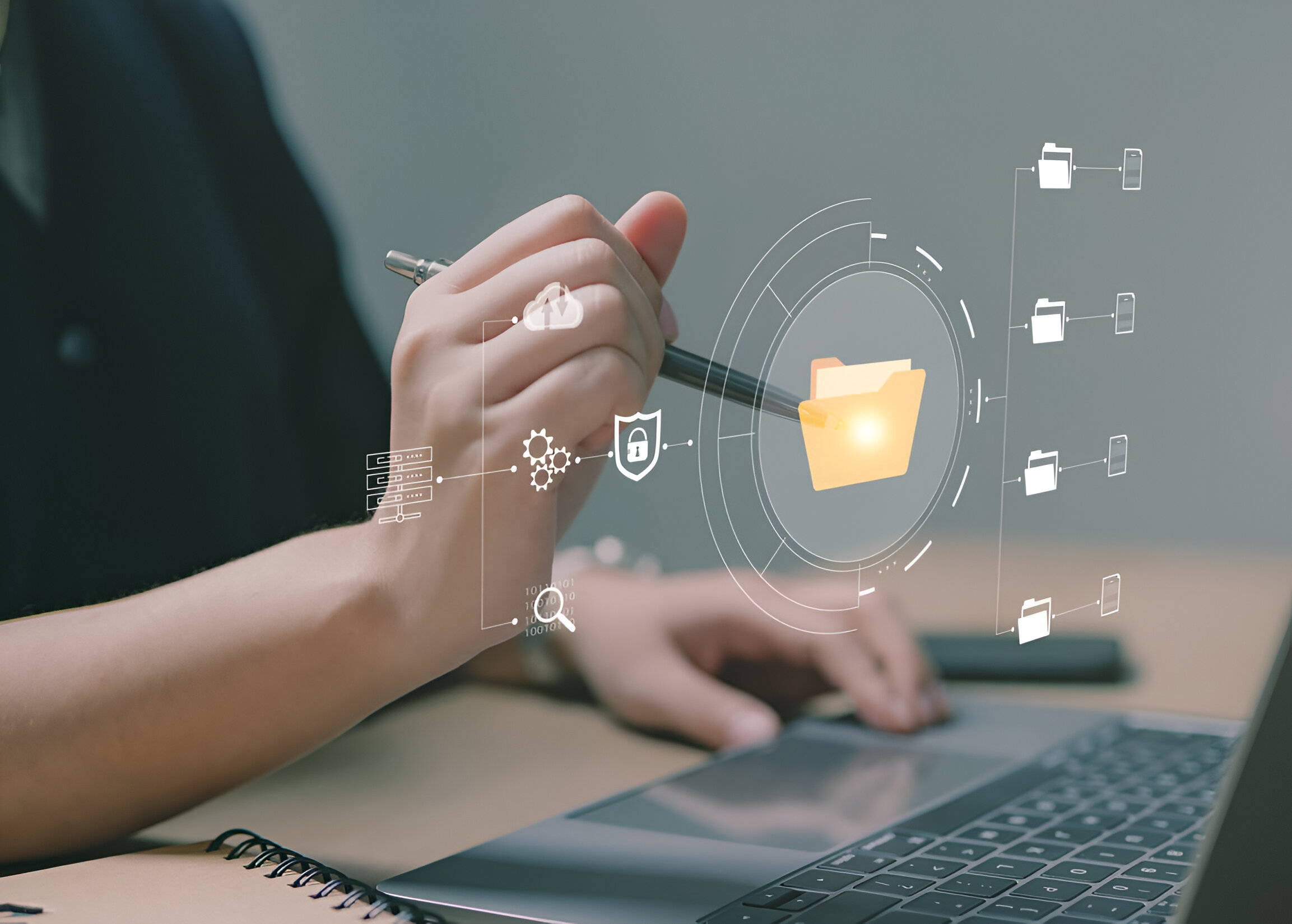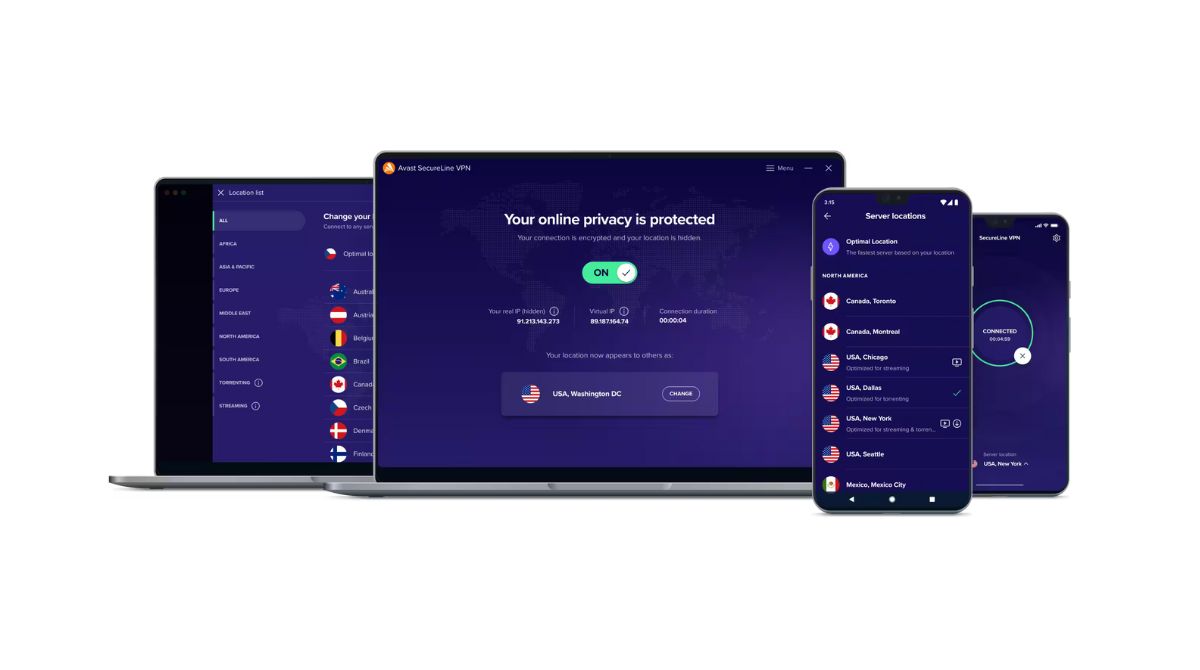Introduction
Peer-to-peer (P2P) downloading has revolutionized the way we share and obtain files over the internet. It allows users to directly connect with each other and share files without relying on a centralized server. However, with the rise of P2P file-sharing platforms, there is also an increased need to track and monitor these downloads.
P2P downloading refers to the process of obtaining files from other users who have already downloaded them. It is different from traditional downloading methods where files are obtained from a single server. In P2P downloading, users connect with each other over a network and share files directly.
So, how do they track P2P downloads? The process involves various techniques and technologies that assist in identifying and monitoring users engaged in P2P file-sharing activities. These methods enable authorities, copyright holders, and organizations to protect their intellectual property and prevent illegal sharing of copyrighted material.
In the following sections, we will explore some of the main methods used to track P2P downloads.
What is P2P downloading?
Peer-to-peer (P2P) downloading is a file-sharing method that allows users to directly exchange files with one another without relying on a central server. Unlike traditional downloading, where files are obtained from a single source, P2P downloading connects users in a network, where each user can act as both a downloader and an uploader.
The concept behind P2P downloading is simple: instead of downloading files from a central server, users download portions of the file from other users who have already downloaded it. This decentralized system not only provides faster download speeds, but it also distributes the bandwidth load among the users, making it more efficient and resilient to server failures.
One of the key advantages of P2P downloading is its ability to facilitate the sharing of large files, such as movies, software, and music albums. Instead of relying on a single server that may experience slow download speeds or limited capacity, P2P networks allow users to download files from multiple sources simultaneously, resulting in faster and more reliable downloads.
P2P downloading operates on the principle of file chunking, where large files are divided into smaller pieces. Each piece, known as a “chunk,” is then distributed across the network. When a user requests to download a file, their P2P client software locates the available sources for each chunk and initiates simultaneous downloads from multiple peers. Once all the chunks are downloaded, the P2P client software reassembles them into the complete file.
While P2P downloading has its advantages, it has also faced scrutiny due to its association with copyright infringement. Illegally sharing copyrighted material, such as movies, music, and software, is a concern for copyright holders and intellectual property rights organizations. As a result, various methods have been developed to track and monitor P2P downloads to enforce copyright laws and protect intellectual property.
How do they track P2P downloads?
Tracking P2P downloads involves various techniques and technologies that allow authorities to monitor and identify users engaged in file-sharing activities. While the specifics of these methods may vary, they all aim to gather information that can be used to enforce copyright laws and protect intellectual property. Let’s explore some of the main methods used:
- IP Address Tracking: One of the primary methods used to track P2P downloads is through IP address tracking. Each device connected to the internet is assigned a unique IP address, which serves as its digital identifier. By monitoring the IP addresses associated with P2P file-sharing activities, authorities can trace the source and destination of the file transfers, allowing them to identify individuals involved in copyright infringement.
- Metadata: P2P networks often include metadata, which provides information about the files being shared. This metadata includes details such as the file name, size, and even descriptions or tags associated with the file. By analyzing this metadata, authorities can gather valuable information about the files being shared and the users involved in the process.
- Seeder and Leecher Identification: P2P networks rely on the participation of both seeders and leechers. Seeders are users who have completed downloading a file and continue sharing it with others, while leechers are users who are currently in the process of downloading a file. By monitoring the behavior and activity of seeders and leechers, authorities can identify those participating in illegal file sharing.
- Deep Packet Inspection (DPI): DPI is a technology used to inspect and analyze the contents of network traffic. It allows authorities to examine the data packets being transmitted over the network, enabling them to detect and identify P2P file-sharing activities. DPI can reveal information about the files being transferred, the users involved, and even the specific P2P protocol being used.
- Monitoring File Hashes: P2P networks often rely on file hashes to verify data integrity and ensure that files are downloaded correctly. These file hashes are unique identifiers generated based on the file’s contents. Authorities can use these file hashes to track the distribution of specific files and identify users who are sharing copyrighted material.
- Joining P2P Networks: In some cases, authorities may employ undercover agents or bots that join P2P networks to monitor and gather information about file-sharing activities. These agents or bots can interact with other users in the network, collect evidence of copyright infringement, and assist in identifying individuals involved in illegal file sharing.
By utilizing these various tracking methods, authorities and copyright holders can monitor and enforce copyright laws on P2P networks. It is important to note that the effectiveness of these methods can be influenced by the privacy measures implemented by users, including the use of virtual private networks (VPNs) or anonymity tools that conceal their IP addresses and encrypt their network traffic.
IP Address Tracking
IP address tracking is one of the primary methods used to monitor and track P2P downloads. Every device connected to the internet is assigned a unique IP address, which serves as its digital identifier. When users engage in P2P file-sharing activities, their IP addresses are visible to others in the network, allowing authorities to trace the source and destination of file transfers.
Authorities and copyright holders can monitor P2P networks by identifying IP addresses associated with file-sharing activities. By analyzing the IP addresses, they can determine the geographic location of the users involved, allowing them to take appropriate action in accordance with copyright laws and regulations.
IP address tracking allows authorities to gather evidence and potentially identify individuals engaging in copyright infringement. Armed with this information, they can send infringement notices to Internet Service Providers (ISPs) requesting the disclosure of subscriber information related to specific IP addresses. This enables authorities to take legal action against infringing individuals or educate them about copyright laws and the consequences of their actions.
However, it is important to note that tracking IP addresses alone may not always lead directly to the identity of the individual responsible for the file-sharing activity. The IP address exposed in a P2P network may belong to an ISP or a network router, making it necessary for authorities to further investigate and gather additional evidence to establish the connection between the IP address and the responsible user.
Users can take measures to protect their privacy by using Virtual Private Networks (VPNs) or anonymity tools. A VPN encrypts internet traffic and routes it through servers located in different locations, masking the user’s true IP address and providing an additional layer of privacy. Anonymity tools, such as the Tor network, can further obfuscate the user’s identity by routing traffic through a series of volunteer-operated nodes.
IP address tracking, when combined with other tracking methods and evidence gathering techniques, can be a powerful tool in the enforcement of copyright laws on P2P networks. It serves as a starting point for authorities to identify individuals engaged in illegal file sharing and take appropriate action to protect intellectual property rights.
Metadata
Metadata plays a crucial role in tracking and monitoring P2P downloads. In the context of file-sharing networks, metadata refers to the information associated with files being shared, such as the file name, size, description, and even tags or categories.
Authorities and organizations monitor and analyze metadata in P2P networks to gather information about the files being shared and the users involved in the file-sharing activities. This data can provide valuable insights and help enforce copyright laws.
One of the key benefits of metadata is that it allows authorities to identify specific files that may infringe upon copyright. By scanning the metadata associated with shared files, they can search for keywords or terms indicative of copyrighted material, enabling them to focus their efforts on content of interest. For example, they can search for movie titles, music albums, or software names.
In addition to identifying potentially infringing files, metadata can also provide information about the users participating in P2P networks. By examining the metadata, authorities can gain insights into the popularity and prevalence of certain files, as well as the uploaders and downloaders associated with them.
Metadata can be used as evidence in legal proceedings against copyright infringers. Authorities can compile a comprehensive record of metadata associated with specific files, including timestamps, file hashes, and user information, to establish the distribution of copyrighted material and prove copyright infringement.
However, it’s worth noting that metadata alone may not be sufficient to identify the actual individuals responsible for file sharing. Metadata generally includes information about the file itself rather than the users engaging in file-sharing activities. To connect the metadata with specific users, authorities often rely on additional tracking methods, such as IP address tracking or monitoring user behavior within the P2P network.
It is important to recognize that metadata, like any form of data, can be manipulated or falsified. Some users may intentionally modify file information, such as file names or tags, in an attempt to evade detection or mislead authorities. As a result, authorities must be diligent in verifying the accuracy and reliability of the metadata they analyze.
Overall, metadata provides valuable information about the files being shared and the users involved in P2P downloads. By monitoring and analyzing metadata, authorities can gather evidence of copyright infringement, focus their enforcement efforts, and take appropriate action to protect intellectual property rights.
Seeder and Leecher Identification
Identifying seeders and leechers is another important method used to track P2P downloads. In a P2P network, seeders are users who have completed the download of a file and continue to share it with others, while leechers are users who are currently downloading the file.
Authorities and copyright holders monitor and analyze the behavior of seeders and leechers on P2P networks to gather information and evidence of copyright infringement. By identifying these users, they can take appropriate action to enforce copyright laws and protect intellectual property.
One way to identify seeders and leechers is by examining the connections made within the P2P network. When users connect to a P2P network and start downloading or sharing files, their P2P client software establishes connections with other users, forming a network of peers. By analyzing these connections, authorities can identify active uploaders (seeders) and downloaders (leechers).
Another method of seeder and leecher identification is through user participation in specific P2P protocols or networks. Some P2P protocols require users to actively participate in sharing files for a certain period of time to gain download privileges. Authorities can leverage this requirement to identify dedicated seeders who continuously share copyrighted content.
Monitoring the activity of seeders and leechers provides valuable insights into the distribution and popularity of specific files. It allows authorities to understand the scale of copyright infringement and focus their enforcement efforts on high-impact cases, targeting the most active seeders and downloaders.
However, it is important to note that identifying seeders and leechers alone may not reveal the true identity of the individuals involved in file-sharing activities. Additional tracking methods, such as IP address tracking or metadata analysis, are often required to establish the connection between the P2P network participants and their real-world identities.
Moreover, the distinction between seeders and leechers can be fluid. Users can transition from being a leecher to a seeder once they have completed downloading a file, and vice versa. This dynamic nature of user roles in P2P networks adds complexity to the process of seeder and leecher identification.
Despite these challenges, the identification and monitoring of seeders and leechers are vital strategies for enforcing copyright laws and protecting intellectual property rights in P2P networks. By focusing on active participants in file sharing, authorities can take appropriate action to deter copyright infringement and promote legal methods of content distribution.
Deep Packet Inspection (DPI)
Deep Packet Inspection (DPI) is a technology used to track and monitor P2P downloads by inspecting the contents of network traffic. It enables authorities to scrutinize the data packets being transmitted over a network and extract information about the type of traffic, including P2P file-sharing activities.
With DPI, authorities can analyze the payload of network packets, which contain the actual data being transmitted. By examining these packets, they can identify patterns and signatures specific to P2P protocols used in file-sharing activities. This allows authorities to pinpoint users engaged in P2P downloads and monitor their file-sharing behavior.
DPI provides granular visibility into the data passing through a network, allowing authorities to determine not only the fact that P2P traffic is present but also the specific P2P protocols being used. This information is valuable in identifying the type of file-sharing activities taking place, whether it is BitTorrent, eDonkey, or other P2P protocols.
By detecting and monitoring P2P traffic through DPI, authorities can gather evidence of copyright infringement. They can track the transfer of copyrighted material and identify the users involved in sharing these files. This information can then be used to initiate legal proceedings or send infringement notices to the responsible individuals.
However, it is important to note that DPI has raised concerns regarding privacy and security. The technology allows for deep inspection of network packets, potentially exposing sensitive user information. To address these concerns, authorities must abide by legal frameworks and employ strict safeguards to protect user privacy and ensure that DPI is applied within appropriate boundaries.
Additionally, users may employ techniques to obfuscate their P2P traffic and bypass DPI detection. This can include using encryption or virtual private networks (VPNs) to hide the contents of their network traffic, making it more challenging for authorities to identify P2P downloads through DPI alone.
While DPI is a valuable tool for tracking and monitoring P2P downloads, it is often used alongside other tracking methods, such as IP address tracking or metadata analysis, to gather comprehensive evidence and identify users engaged in copyright infringement. These combined efforts provide a more robust approach to enforcement and help protect intellectual property rights on P2P networks.
Monitoring File Hashes
Monitoring file hashes is another method employed to track and monitor P2P downloads. A file hash is a unique identifier derived from the contents of a file. It is generated using algorithms such as MD5, SHA-1, or SHA-256. Monitoring file hashes allows authorities to track the distribution of specific files and identify users who are sharing copyrighted material.
Authorities and copyright holders compile databases of known file hashes associated with copyrighted material. These databases serve as references for identifying illegally shared files on P2P networks. By comparing the file hashes of files being shared, authorities can determine whether they match the hashes of copyrighted material in their databases.
When a user engages in P2P file sharing, their P2P client software creates a hash of the files they are sharing. This hash is publicly visible within the network and can be used to identify the specific file being shared. Authorities leverage this hash to monitor P2P networks for the presence of copyrighted material.
Monitoring file hashes allows authorities to take proactive measures to protect intellectual property. When a match is found between a known file hash in the database and a file being shared on a P2P network, authorities can take action to enforce copyright laws. This may involve sending infringement notices, initiating legal proceedings, or working with ISPs to disrupt the sharing of copyrighted material.
It is worth noting that monitoring file hashes alone does not provide authorities with information about the users who are sharing the files. To connect the file hashes with user identities, additional tracking methods, such as IP address tracking or metadata analysis, are often required.
However, it is important to acknowledge that file hashes can be manipulated or altered to evade detection. Some users may modify the file contents or employ techniques such as file packing or encryption to change the hash value and make it more difficult to match against known hashes in the databases. Authorities must remain vigilant and develop strategies to handle these challenges.
Despite the limitations, monitoring file hashes remains a valuable technique in tracking and identifying copyrighted material shared on P2P networks. It provides a way to systematically detect and monitor the distribution of specific files, enabling authorities to protect intellectual property rights and combat unauthorized file sharing.
Joining P2P Networks
Joining P2P networks is a technique employed by authorities and organizations to track and monitor P2P downloads. By actively participating in P2P networks, they can gather information, gather evidence, and identify individuals engaged in file-sharing activities.
Undercover agents or specialized software can be used to join P2P networks and interact with other users. These agents or software act as regular participants within the network, engaging in conversations, downloading files, and gathering information about file-sharing activities.
Joining P2P networks provides authorities with direct access to P2P communities and enables them to observe and collect evidence of copyright infringement. By actively participating, they can identify high-profile cases, monitor the sharing of specific copyrighted material, and gather intelligence on the users involved.
Through participation, authorities can build cases against individuals engaged in illegal file sharing. They can record and document specific instances of copyright infringement, timestamps, user identities, and other relevant information that can be used as evidence in legal proceedings.
However, it is essential to conduct these operations within the boundaries of the law, ensuring that the methods used comply with legal requirements and protect user privacy. The involvement of undercover agents or specialized software must be done in accordance with appropriate legal authorization and oversight.
Joining P2P networks also presents challenges, as users may employ various tactics to identify and evade potential undercover agents. They may be cautious about sharing copyrighted material with new or unknown participants, thwarting the efforts of authorities to observe and gather evidence. Therefore, extensive planning and caution must be exercised to maintain the integrity and effectiveness of the operations.
Despite these challenges, joining P2P networks remains a valuable method for tracking and monitoring P2P downloads. It allows authorities to gather real-time intelligence, identify individuals engaged in copyright infringement, and take appropriate action to enforce copyright laws and protect intellectual property rights.
Conclusion
Tracking and monitoring P2P downloads is a complex and dynamic process that involves various techniques and technologies. In this article, we explored several methods used to track P2P downloads, including IP address tracking, metadata analysis, seeder and leecher identification, deep packet inspection (DPI), monitoring file hashes, and joining P2P networks.
IP address tracking allows authorities to trace the source and destination of file transfers by monitoring the unique IP addresses associated with P2P file-sharing activities. Metadata analysis provides valuable insights into the files being shared and the users involved, helping authorities focus their enforcement efforts. Seeders and leechers can be identified by analyzing network connections and user participation in P2P networks.
DPI technology enables deep inspection of network traffic, allowing authorities to identify P2P protocols and gather evidence of copyright infringement. Monitoring file hashes helps track the distribution of specific files on P2P networks, enabling authorities to take appropriate action against infringing individuals. Joining P2P networks provides direct access to P2P communities to gather intelligence and evidence of copyright infringement.
While these methods assist in tracking and enforcing copyright laws on P2P networks, it is important to balance their use with user privacy and legal considerations. Authorities must abide by legal frameworks, protect user privacy, and ensure the ethical implementation of tracking techniques.
Overall, tracking P2P downloads plays a vital role in protecting intellectual property, combating copyright infringement, and upholding the rights of content creators. By employing a combination of tracking methods and gathering comprehensive evidence, authorities can take appropriate action to enforce copyright laws, educate users about the consequences of their actions, and promote legal methods of content distribution on P2P networks.

























